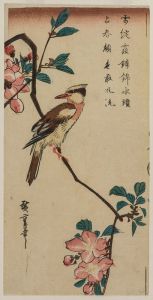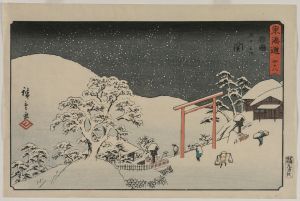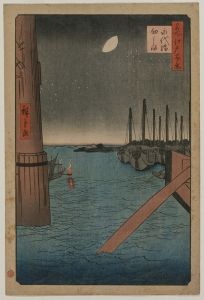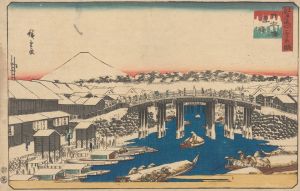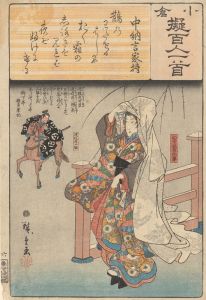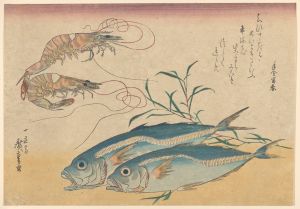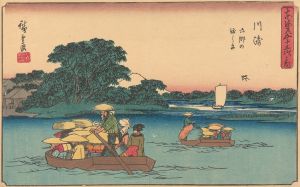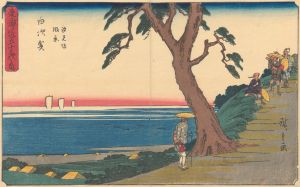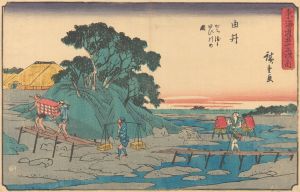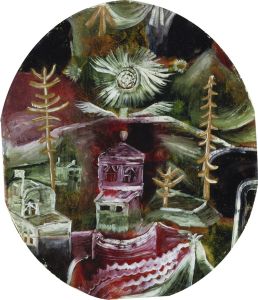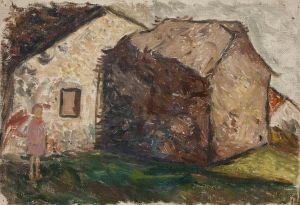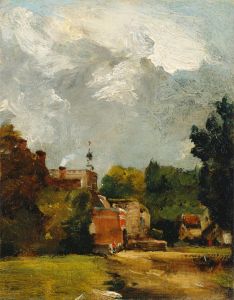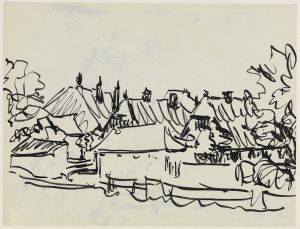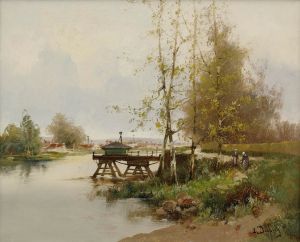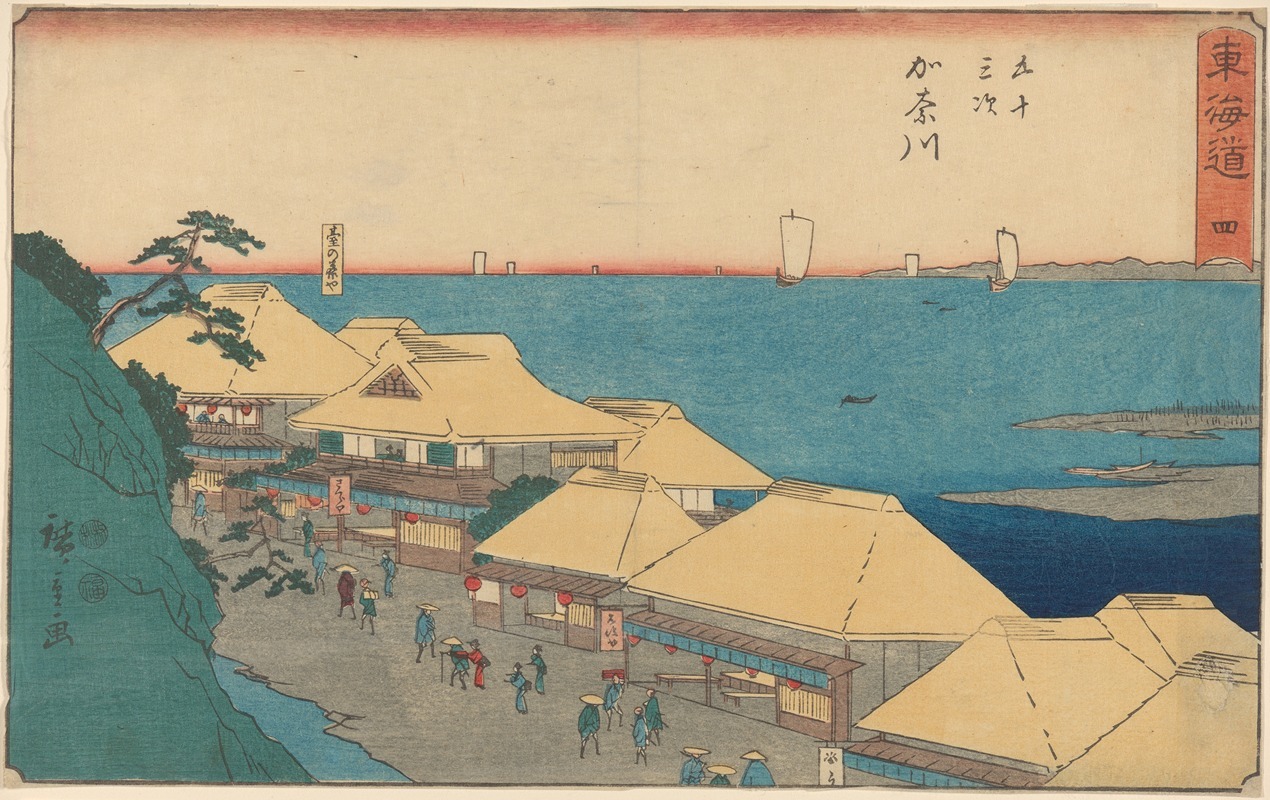
Kanagawa Yedo; House on River
A hand-painted replica of Andō Hiroshige’s masterpiece Kanagawa Yedo; House on River, meticulously crafted by professional artists to capture the true essence of the original. Each piece is created with museum-quality canvas and rare mineral pigments, carefully painted by experienced artists with delicate brushstrokes and rich, layered colors to perfectly recreate the texture of the original artwork. Unlike machine-printed reproductions, this hand-painted version brings the painting to life, infused with the artist’s emotions and skill in every stroke. Whether for personal collection or home decoration, it instantly elevates the artistic atmosphere of any space.
Andō Hiroshige, a renowned Japanese ukiyo-e artist of the Edo period, is celebrated for his evocative landscapes and scenes of everyday life. One of his notable works is "Kanagawa Yedo; House on River," which exemplifies his mastery in capturing the essence of a place and moment through the medium of woodblock printing.
Hiroshige was born in 1797 in Edo, now Tokyo, and became one of the last great ukiyo-e masters. His work is characterized by its innovative compositions and use of color, which influenced many Western artists, including the Impressionists. Hiroshige's art often depicted scenes from the Tōkaidō, a vital coastal route connecting Edo with Kyoto, and his series "The Fifty-three Stations of the Tōkaidō" remains one of his most famous.
"Kanagawa Yedo; House on River" is part of Hiroshige's exploration of the landscapes and urban scenes of Japan. While specific details about this particular print are limited, it is consistent with Hiroshige's style, which often includes a harmonious blend of natural and human elements. His works typically feature a keen attention to detail and a deep appreciation for the transient beauty of nature, a concept known as "mono no aware" in Japanese culture.
In this print, Hiroshige likely employs his signature techniques, such as the use of perspective to draw the viewer into the scene and the application of vibrant colors to convey the mood and atmosphere. His ability to depict water, weather, and light with subtle gradations of color and line work is a hallmark of his style. The depiction of a house by the river suggests a tranquil setting, possibly capturing a moment of daily life or travel along one of Japan's many waterways.
Hiroshige's work often reflects the cultural and social aspects of the Edo period, a time of relative peace and prosperity in Japan. The period saw a flourishing of the arts, with ukiyo-e prints becoming popular among the merchant class. These prints were not only appreciated for their aesthetic qualities but also served as a means of documenting and celebrating the landscapes and customs of Japan.
The influence of Hiroshige's work extended beyond Japan, particularly after his prints were introduced to Europe in the 19th century. Western artists, including Vincent van Gogh and Claude Monet, admired his compositions and use of color, which contributed to the development of Impressionism and Post-Impressionism. Hiroshige's ability to capture the fleeting beauty of nature and everyday life continues to resonate with audiences worldwide.
While "Kanagawa Yedo; House on River" may not be as widely recognized as some of Hiroshige's other works, it remains an important piece within his oeuvre, showcasing his skill in rendering serene and picturesque scenes. Through his art, Hiroshige offers a window into the world of Edo-period Japan, inviting viewers to appreciate the beauty and simplicity of a bygone era.





